NCERT Solutions for Class 10 Science Chapter 8 – Heredity
NCERT Solutions for Class 10 Science Chapter 8 – Heredity are essential for understanding key Biology concepts in the CBSE curriculum. These well-structured answers help students grasp topics like Mendelian genetics, traits inheritance, evolution, and variation. Designed as per the latest syllabus, these solutions strengthen conceptual clarity and improve exam preparation. Ideal for revision and practice, they encourage logical thinking and scientific understanding, making them a valuable study tool for scoring well in Class 10 Science exams.
NCERT Solutions For Class 10 Science – Heredity – Exercise Images
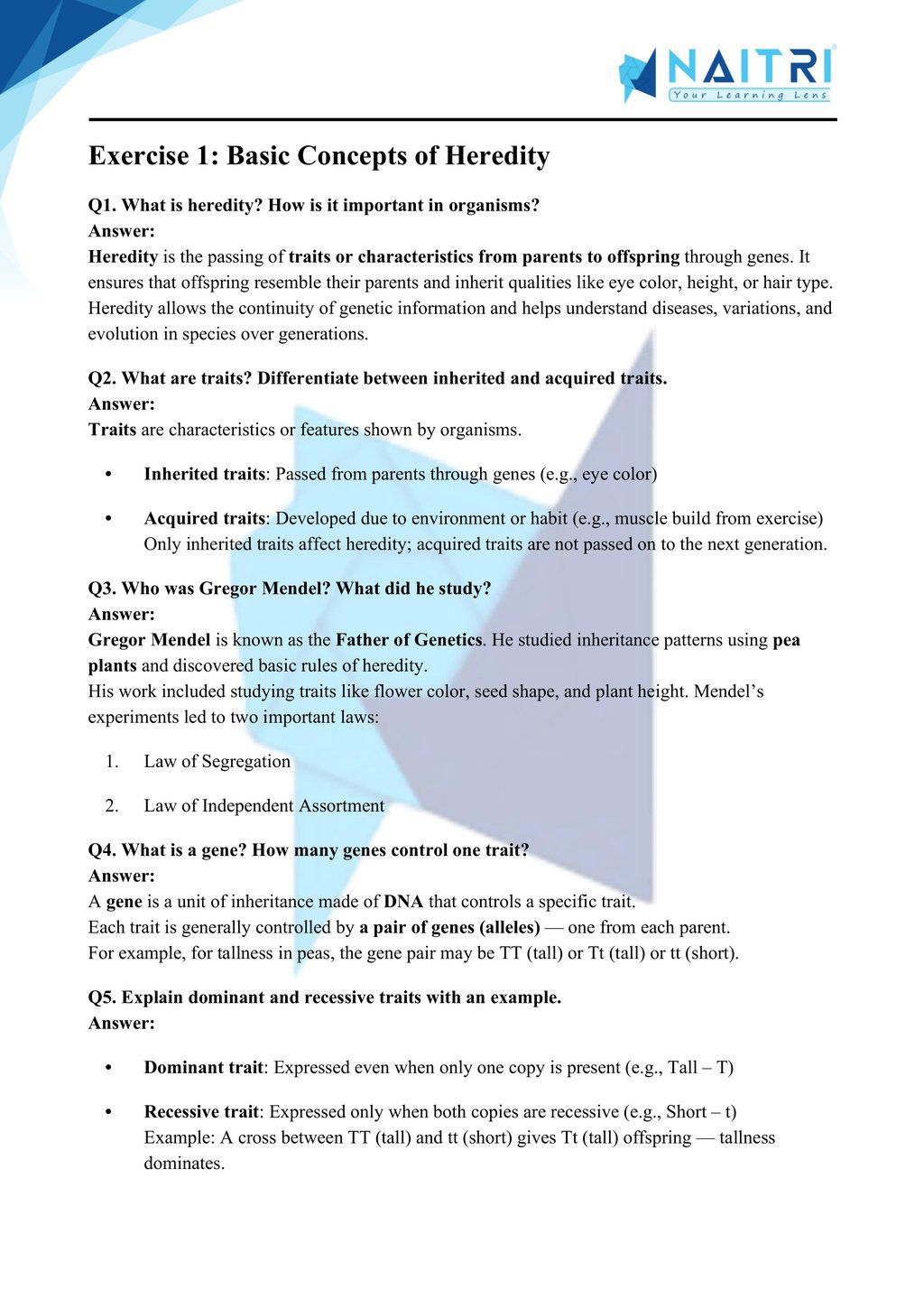
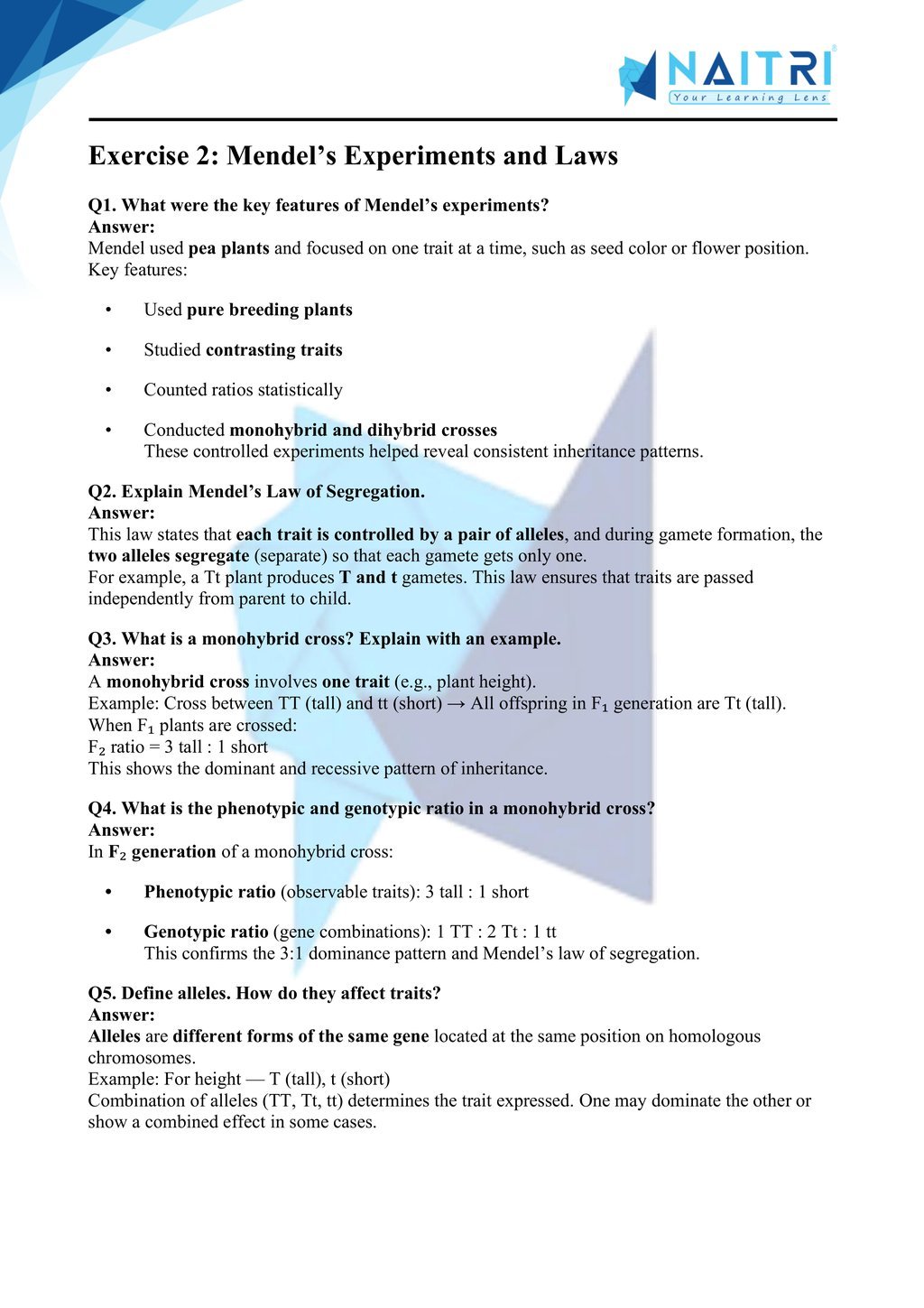
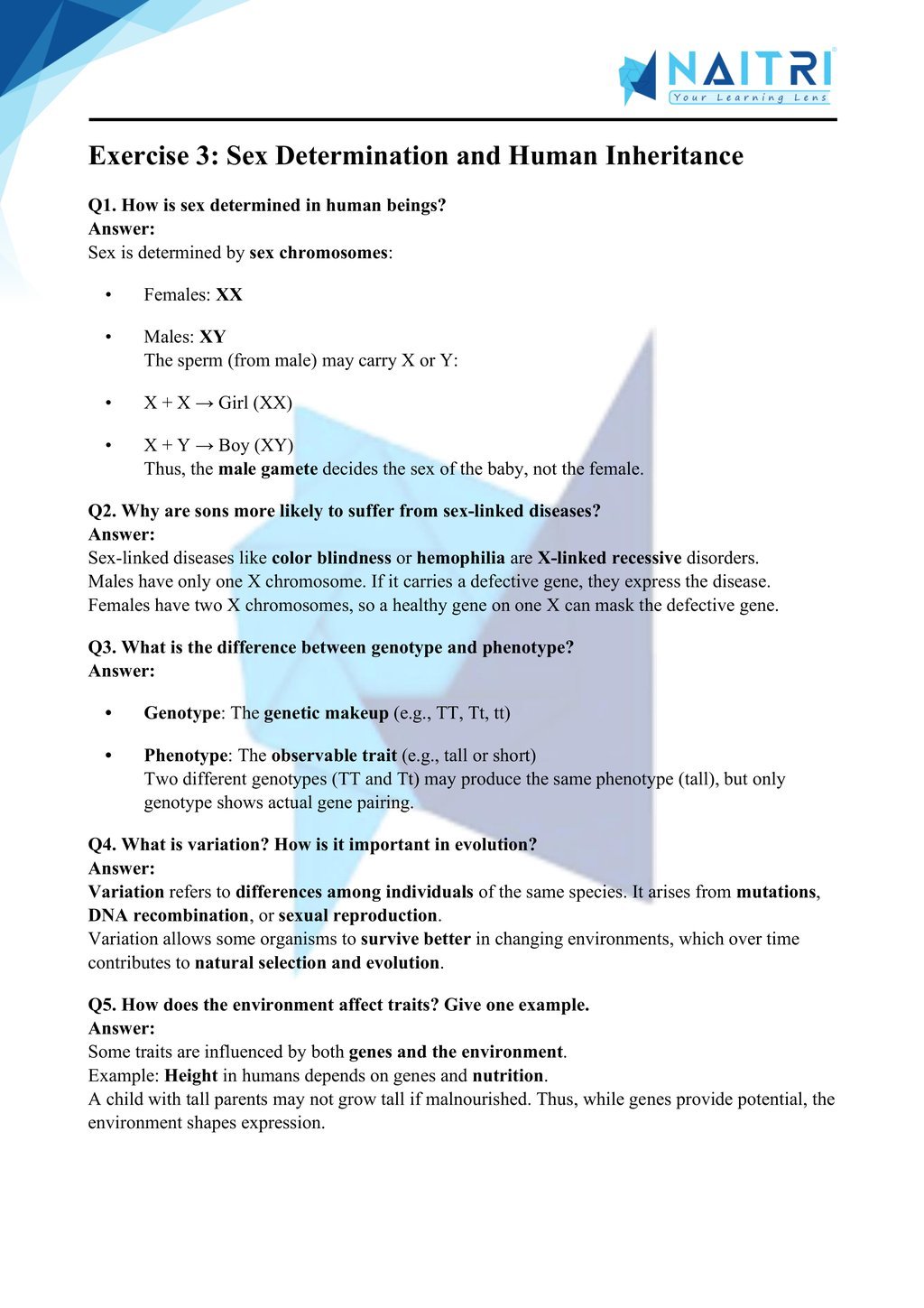
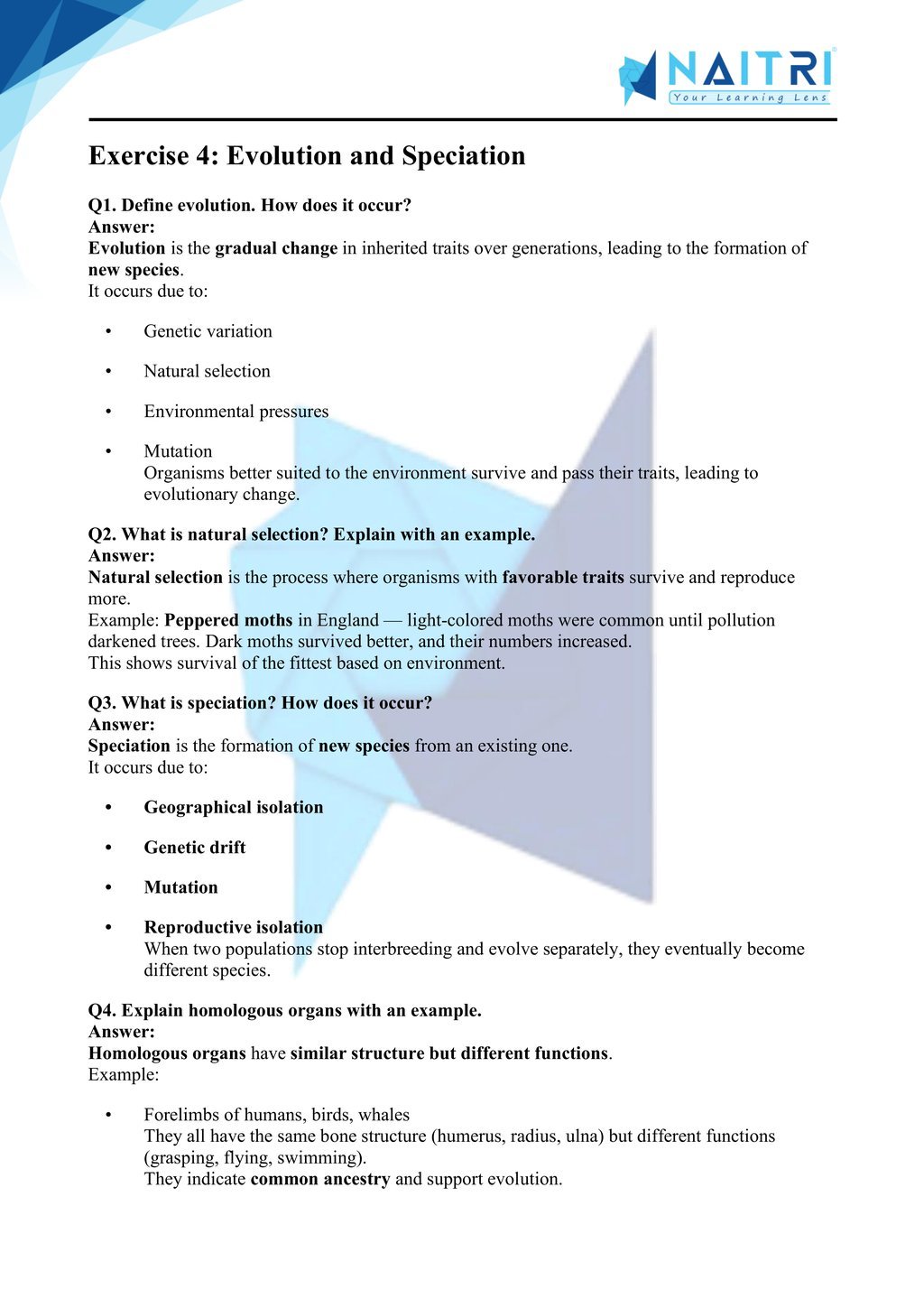
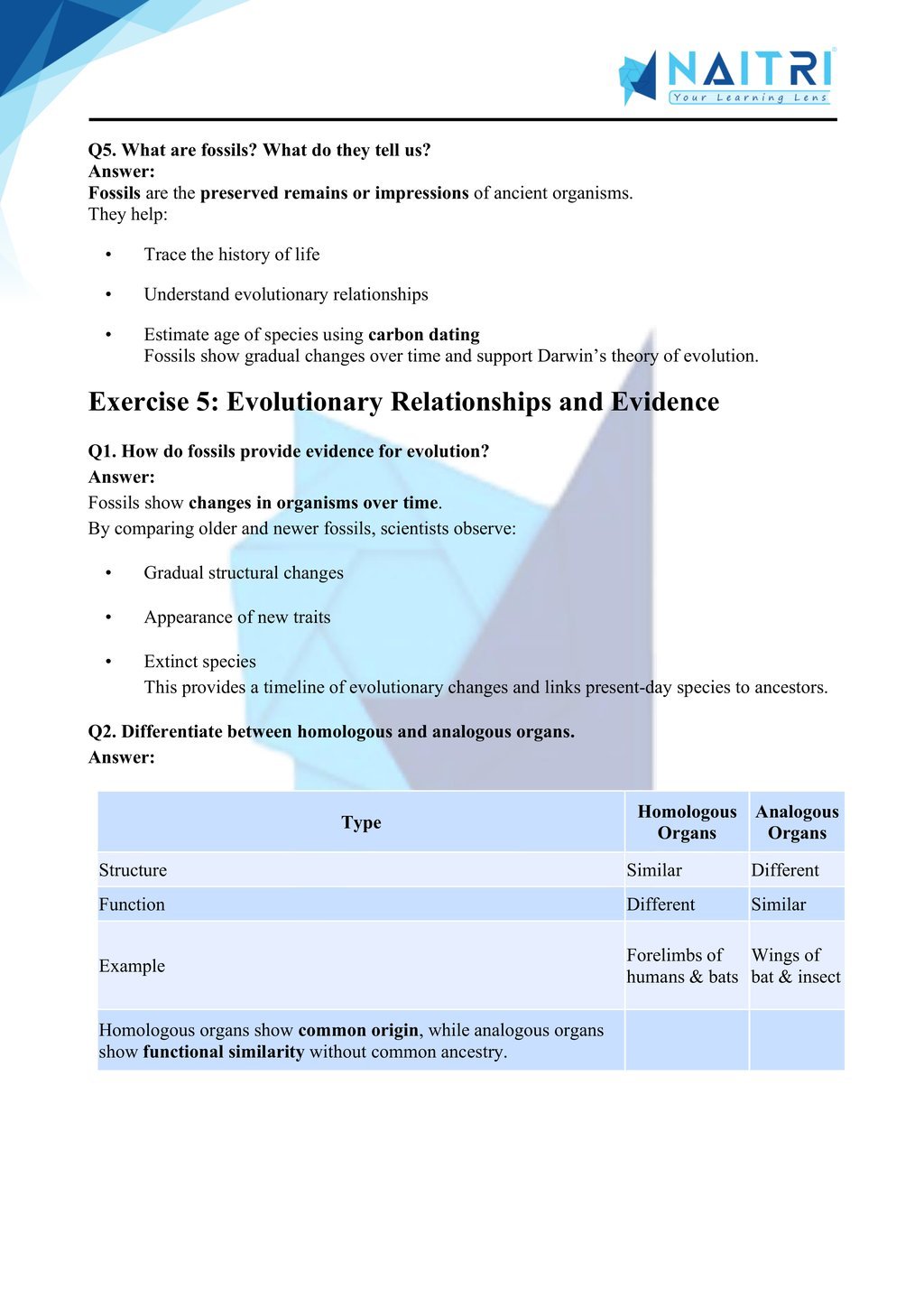
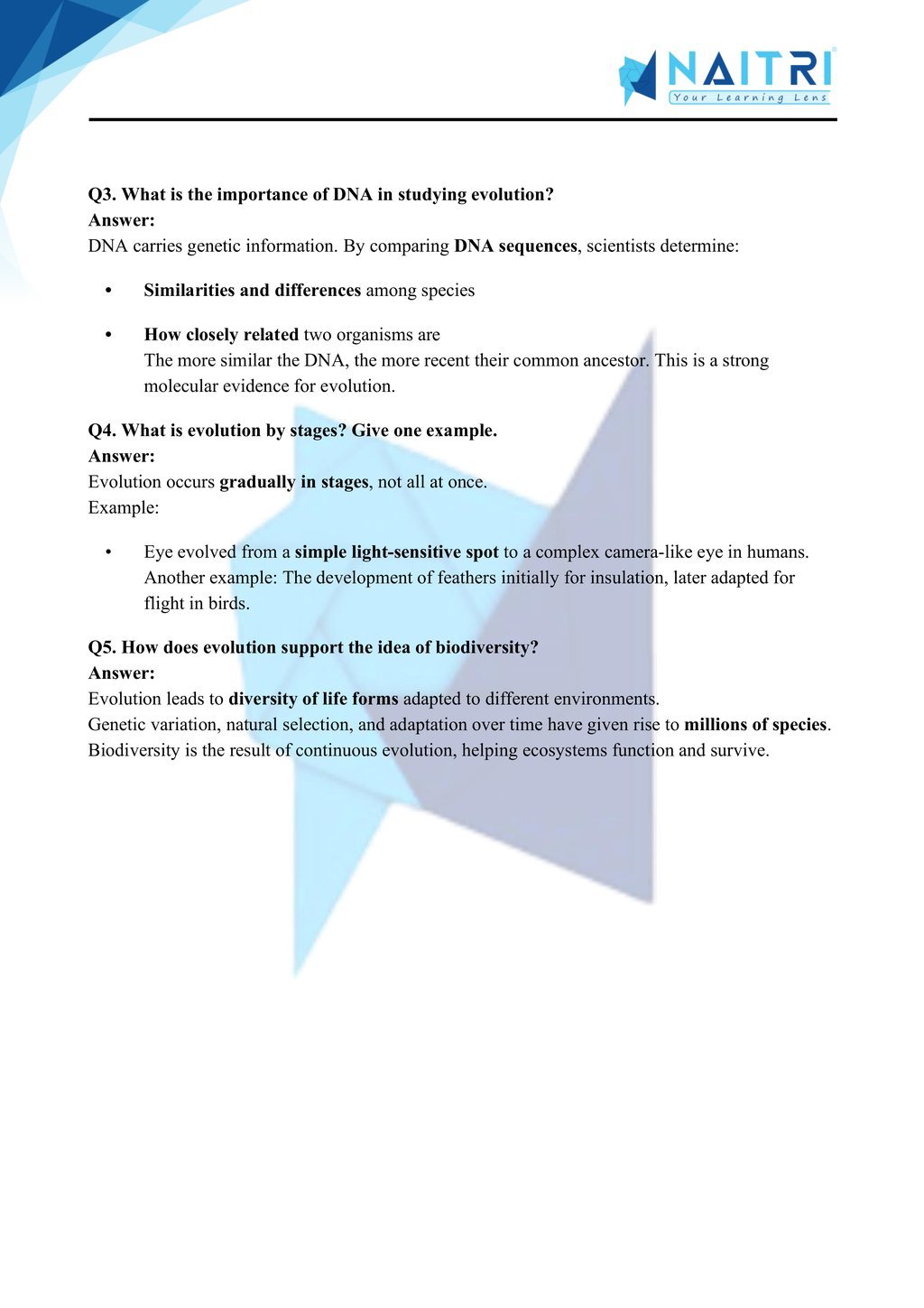
Experience Science Like Never Before – With AR!
Understanding Heredity is now more exciting and immersive! With the NAITRI App, you can explore complex science concepts through Augmented Reality (AR). Watch traits pass on, Punnett squares form, and genetic variations play out — right in front of you. Our AR-powered lessons make learning interactive, 3D, and fun, helping you retain concepts better and enjoy every topic.



Visualize . Interact . Understand . The future of learning is here
Heredity – Important Questions with Answers
1. Define heredity. Why is it important in living organisms?
Answer: Heredity is the process by which traits and characteristics are passed from parents to offspring through genes. It ensures continuity of species and accounts for both similarities and differences in generations.
2. Who is known as the Father of Genetics? Name his experiment.
Answer: Gregor Johann Mendel is known as the Father of Genetics. He conducted experiments on pea plants to study inheritance patterns and established the basic laws of heredity.
3. What is a gene? Explain its role in heredity.
Answer: A gene is a unit of heredity found on chromosomes. It carries information that determines traits by controlling protein synthesis and passing instructions from one generation to the next.
4. Differentiate between dominant and recessive traits.
Answer: Dominant traits are expressed even when only one allele is present, while recessive traits are expressed only when both alleles are recessive. For example, tallness is dominant over dwarfness in pea plants.
5. What is meant by genotype and phenotype? Give examples.
Answer: Genotype refers to the genetic makeup of an organism (e.g., TT or Tt), while phenotype is the observable trait (e.g., tall plant). Genotype determines phenotype expression.
6. Describe Mendel’s monohybrid cross and its conclusion.
Answer: In a monohybrid cross between a pure tall (TT) and dwarf (tt) pea plant, all F1 offspring were tall (Tt). F2 generation showed 3 tall:1 dwarf, proving dominance and segregation.
7. What is the law of segregation?
Answer: Mendel’s law of segregation states that during gamete formation, alleles for each trait separate so each gamete receives only one allele. This explains the 3:1 ratio in F2 generation.
8. What is dihybrid cross? What ratio is observed in F2 generation?
Answer: A dihybrid cross studies two traits simultaneously. Mendel crossed round-yellow (RRYY) and wrinkled-green (rryy) seeds. The F2 generation had a 9:3:3:1 phenotypic ratio, demonstrating independent assortment.
9. State Mendel’s law of independent assortment.
Answer: It states that alleles of different traits are inherited independently of each other. This law applies when genes are located on different chromosomes and explains variation in combinations.
10. What are chromosomes? How many are present in humans?
Answer: Chromosomes are thread-like structures made of DNA and proteins that carry genetic information. Humans have 46 chromosomes (23 pairs), with one pair being sex chromosomes.
11. Differentiate between homozygous and heterozygous conditions.
Answer: Homozygous refers to identical alleles for a trait (TT or tt), while heterozygous refers to different alleles (Tt). Homozygous conditions produce true-breeding traits, while heterozygous may express dominance.
12. Define sex chromosomes and mention their types in humans.
Answer: Sex chromosomes determine the sex of an individual. Humans have two types: X and Y. Females have XX, and males have XY, with the Y chromosome responsible for maleness.
13. How is sex determined in human beings?
Answer: The sex of a child is determined by the type of sperm (X or Y) fertilizing the egg. An X-bearing sperm produces a girl (XX), and a Y-bearing sperm produces a boy (XY).
14. Why are traits not exactly replicated in offspring?
Answer: Traits vary due to reshuffling of genes during sexual reproduction, mutations, and environmental influences. Meiosis and fertilization ensure combinations that differ from both parents.
15. What are acquired and inherited traits? Give examples.
Answer: Inherited traits are passed genetically (e.g., eye color), while acquired traits develop from environmental influence (e.g., muscle growth from exercise) and are not passed to offspring.
16. Why acquired traits are not inherited?
Answer: Acquired traits affect body cells but not germ cells (sperm/egg), so they do not alter the DNA passed to offspring and hence are not inherited.
17. What is evolution in biology?
Answer: Evolution is the gradual process by which different species develop and diversify from earlier forms through genetic variation, natural selection, and environmental adaptation over generations.
18. Define fossil and its significance in evolution.
Answer: Fossils are preserved remains of ancient organisms. They provide evidence of past life, show evolutionary links between species, and help estimate the age and development of life forms.
19. What is a homologous organ? Give an example.
Answer: Homologous organs have similar structure but different functions, indicating common ancestry. Example: Forelimbs of humans, birds, and whales perform different tasks but have similar skeletal structure.
20. How do analogous organs differ from homologous organs?
Answer: Analogous organs perform similar functions but have different origins and structures. Example: Wings of birds and insects both help in flying but have different anatomical construction.
21. Define variation and state its role in evolution.
Answer: Variations are differences in traits among individuals of a species. They increase adaptability, survival under changing conditions, and are essential for evolution through natural selection.
22. What is speciation?
Answer: Speciation is the formation of new species from an existing one due to genetic divergence, geographical isolation, reproductive barriers, and natural selection over a long time.
23. How does natural selection lead to evolution?
Answer: Natural selection favors individuals with advantageous traits, leading them to survive and reproduce more successfully. Over time, these traits become common, driving evolution.
24. Give an example showing evolutionary relationship among organisms.
Answer: The presence of similar embryos in fish, reptiles, birds, and mammals suggests a common ancestry. Fossil evidence also shows transitional species linking reptiles to birds (e.g., Archaeopteryx).
25. How are fossils used to determine the age of organisms?
Answer: Fossils found in deeper layers are older. Radiocarbon dating and stratigraphy help scientists estimate the age of fossils, aiding in constructing the timeline of evolution.
Heredity introduces the basic principles of inheritance and variation. Students learn about Mendel’s experiments, dominant and recessive traits, sex determination, and evolutionary relationships. This chapter bridges biology with genetics and evolution, encouraging logical thinking about how traits pass from parents to offspring.
Related Chapters You May Like
Download Naitri App
Easy, Visual Learning — Right on Your Phone
Learn with Augmented Reality! The Naitri app makes CBSE and MP Board concepts interactive and fun — even in low-resource settings. Watch lessons, complete homework, take tests, and track progress — all in one place. Anytime. Anywhere.
Available on








